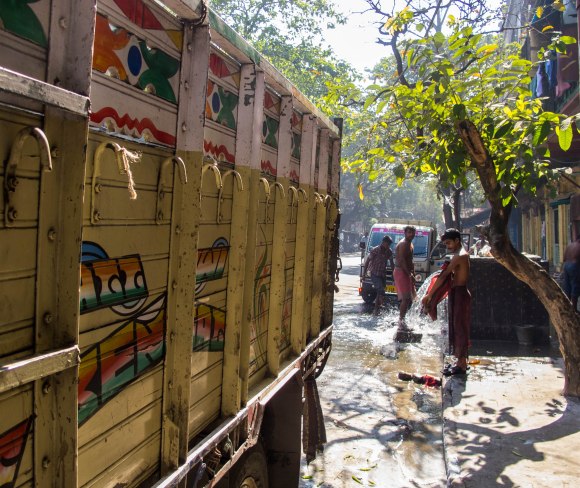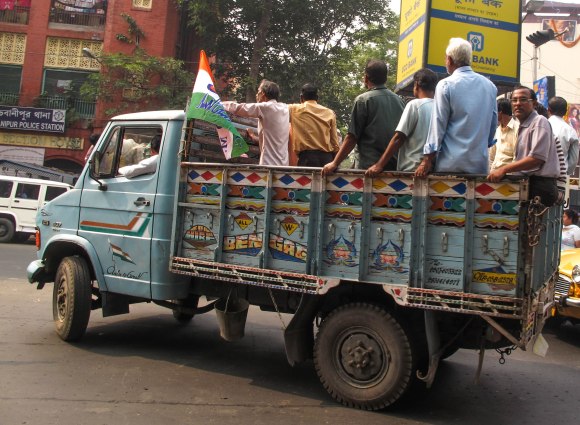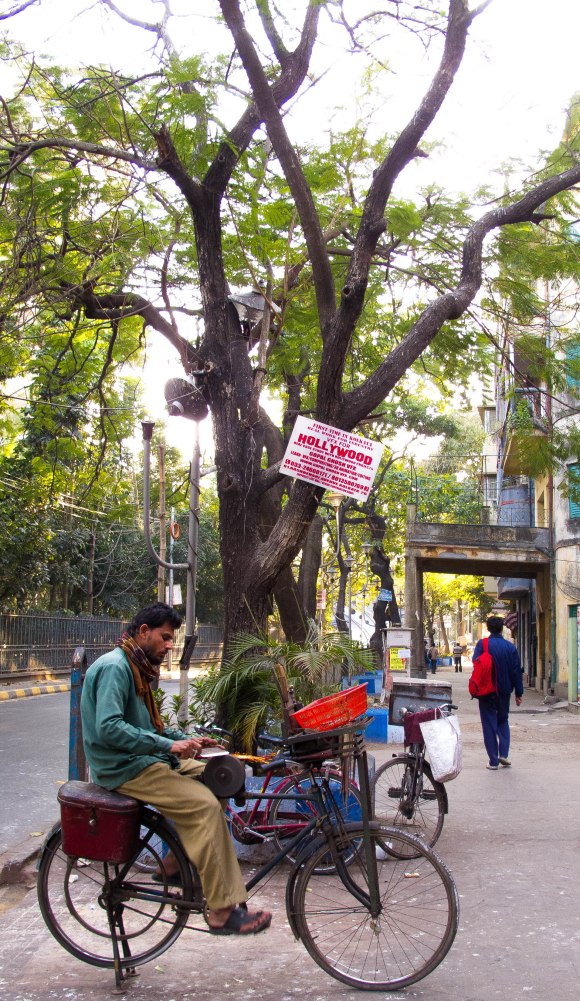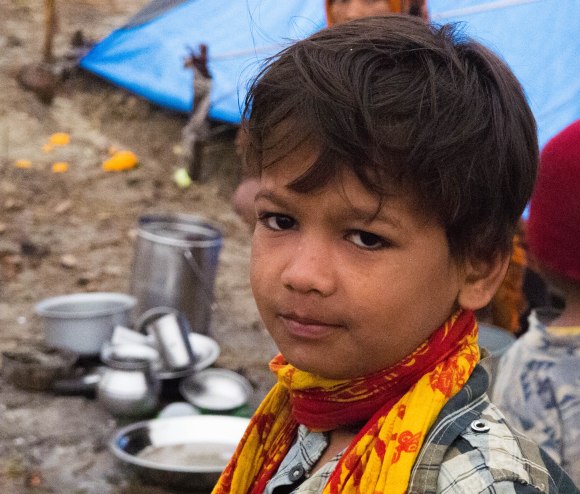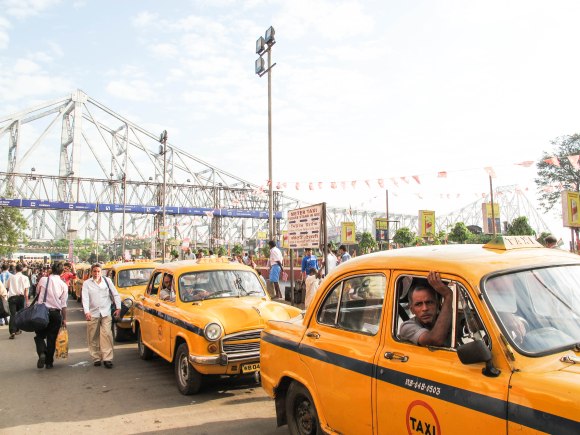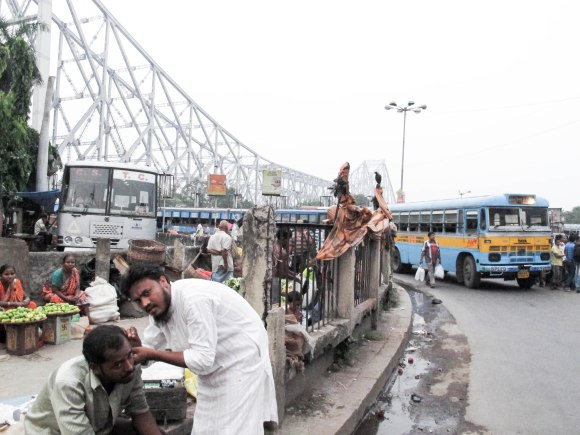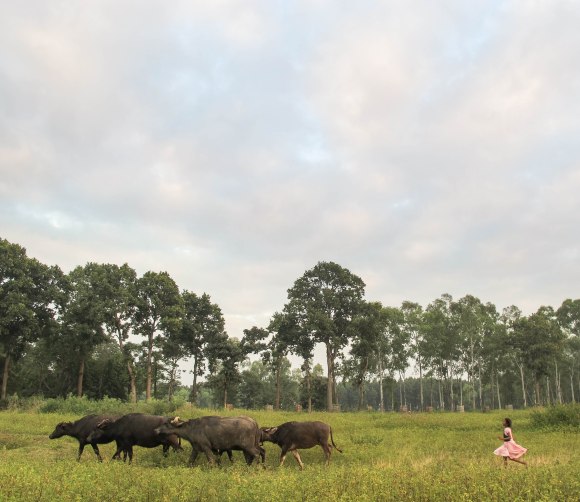Dear Lord, the Great Healer, I kneel before you,
Since every perfect gift must come from You.
I pray, give skill to my hands, clear vision to my mind,
kindness and meekness to my heart.
Give me singleness of purpose, strength to lift up a part
of the burden of my suffering fellow men,
and a true realization of the privilege that is mine.
Take from my heart all guile and worldliness,
That with the simple faith of a child, I may rely on You.Mother Teresa, The Physician’s Prayer
“Wherever you find yourself useful, go ahead and do it.” These were the only words of advice from my friend before my first time volunteering. Hunter was a veteran of the Mother Teresa system, and had come nearly daily for months now. From his experience, he divulged little tricks of the trade: where to store belongings, to bring you own blades for shaving the residents, which Mother Theresa home to go to (the less-known “Prem Dan” instead of the famous “Kalighat Home for the Dying”). I followed him through morning mass in the Mother House, where ethereal light and the angelic voices of the blue and white-robed nuns coated the tomb of Mother Teresa herself. In the Mother House, the wall held paintings of the brown, suffering masses of Calcutta encircling a glowing and rosy-cheeked Mother Theresa at different stages of life. Her eyes were placid.
I followed him through the breakfast for volunteers, where we took simple bread, bananas, and chai, and sang a simple song for leaving volunteers (“We love you, We love you…We’ll miss you, We’ll miss you”). I followed him in through the backstreets of Calcutta from the Mother House, the site of mass, to the Prem Dan, the nursing home that took care of the “dying and destitute”. The children, as we crossed the railroad tracks, yelled “Hello, hello! Chocolate!” upon seeing us, preconditioned by the presence of many a white-skinned feringhee traveling along this route.[1]
Prem Dan emerged, a bright blue [2] nodule in the surrounding brown. I followed Hunter through the gates, the guard checking my day pass. We walked to the men’s side of the nursing home, passing the women’s space as Bengali and Hindi Christian devotionals reverberated through the tended gardens. The old, disabled, the sick, they were all there across the ground, some in chairs, some on the ground, all of their eyes listless.
Once I entered, though, there was very little following. There were subtle head nods, and glances, but the process was incredibly simple: work wherever you think you should. “KNOW THAT YOU ARE NEEDED” one sign said, directed at volunteers. Wash dishes if there are dishes to be washed. Talk if it is time to talk. Serve lunch if lunch needs to be served. Shave faces if there are faces to be shaved (and you have razors and shaving cream with you). Massage limbs if there are limbs to be massaged.
I did all of these, but spent the first hour shaving. It was a simple task I’d done thousands of times, but never on another, for another. His skin was hard, his beard hair mangled, directionless. He smiled a lot. He muttered in incomprehensible and nonsensical Bengali. I spoke back in Hindi to the little I understood. I shaved carefully, emphatically. I made it a show, dramatically dipping the razor into the bucket and flicking the water with a flourish. I told him what a handsome face he had, what smooth hair, so easy to shave. As I finished the second coat and toweled him off, he grabbed my face with both hands. And then he smiled, and sang. He didn’t sing well, but he sang. He sang a melodic song, a weepy Bengali tune of the poet Rabindranath Tagore. Hunter, shaving at my right, looked over, eyebrows raised. “He doesn’t sing for everyone.” I looked at his clean-shaven face, and looked back into his eyes.
It felt good. It felt damn good.





Not a Question of Good or Bad Manners
Calcutta thus far has been an interesting place to be on a “fellowship for service.” The word rings of selflessness, altruism, and noble sacrificial warriors. The truth, though, is that most of my life in Calcutta (and in India generally) has been more of an education in animalistic selfishness.
How could this be true in a country as courteous as India? I have been offered chai in nearly every home I’ve stepped foot into, whether in a talibari, a clay thatched home in the slum, or a mansion in suburban Salt Lake. At times, I have been barricaded into homes against my will and force-fed chai and biscuits to satisfy an overzealous host. Formality around guests requires self-sacrifice, to the point of removing the clothes on one’s back. A country ruled by the British and before that the ceremonial Moghuls, and a city more British than most others in India, has remnants of this pomp and circumstance. At some restaurants, seven waiters attend to your every move, smiling and wobbling their head at each request. They interject like clockwork, asking how the food is, asking if anything else, perhaps dessert sir, would be required. Extravagant politeness and cordiality are the custom, and detection of any hint of self-interest in this world would be strictly off limits. It would be shameful.
This, though, holds true strictly in private spaces and in private relationships. Service comes only in two flavors: the aforementioned, self-sacrificing kind and the kind that doesn’t look you in the eye or give you any value in the universe at all. Naked self-interest is everywhere else once the wrappings of these intimacies are gone. “Guest is god” is an oft-repeated aphorism. What’s left unstated is that anyone not considered a guest is left a devil. The Outside is a Hobbesian state of nature, not just brutish, but lawless, dirty, brimming with raw survival instinct. The proof is everywhere, at the taxi stand, at the roadside stall, in buses, in government offices, even in houses of religion.[3] It’s in the t-shirt seen on one man in New Market, (one of those ubiquitous snarky t-shirts[4]) that displays a gas dial. At full, it reads “PEACE”, at empty, it reads “WAR”. Calcutta, in the open, is an empty tank; survival is the only priority. No room for shame.
It’s there in the booksellers, from Bombay to Calcutta, selling half-xeroxed copies of popular classics (as well as, more disturbingly, Mein Kampf[5]) next to paperbacks with bold, text filled covers, titles blaring to all of New India, “The Science of Getting Rich” or “How to Win Friends and Influence People,” and other get-rich-quick or get-popular-quick or get-power-quick manifestos. It’s also there in the various, rude honks that pervade the common space. Whether it’s a jury-rigged horn made of a plastic bottle on a bike or a bus horn that has a turntable setup with thirty different options (as I saw one young busdriver handling as if he was Avicii), this instrument is used liberally without regard for the fellow citizen. I’m numb to this self-interest now, embedded within it. I too fight for what is mine, because no one else will give it to me.
On the way back from Kumbh Mela, in the train station in Allahabad, I wanted a bottle of water. I walked around, gingerly avoiding areas cordoned off by the Indian Army. The Army prescence was not usual: a week before, in the infinite insanity of Kumbh Mela, dozens had died of a stampede in this very station. I stepped around a few sleeping families, heads rested on suitcases, to get to my final destination: the food stand. Outside of the stand was a scene of chaos, rupee bills held in the air, elbows jockeying for space. It was fifteen customers, yelling their orders repeatedly at the lone server. One pudgy mother protected her box of sweets like a running back, one hand stuck out to stiff-arm a competitor.
As I paused in front of the stand, I ran through a dreamlike scenario in my head: in eloquent and inspirational Hindi, I would persuade them with the Logic of Lines, explaining the “tragedy of the commons”, and the benefits that would be accrued to them if they were organized: faster service, less hoarse voices, less bruised ribcages, peace and calm. Then I snapped out of this pipe dream, realized my actual level of Hindi and more importantly my surrounding circumstances, and elbowed my own way into the abyss for my bottle, rupees in hand.
The two mentalities run side by side: utmost, self-sacrificial civility and dog-eat-dog (mostly of the stray kind).






![]()
But although this is the naked self-interest I’ve been schooled in, it’s not exactly the one that I’m interested in exploring when discussing the notion of service. There’s a different kind of self-interest, a more modest, clothed variety, that is barely discernable but that exists nonetheless. This is the type that I think we need to observe carefully when performing any act termed “service.” This is the question I’ve come to repeatedly, whether it was waking up at 5 A.M. on that Saturday to head to Mother Theresa’s for the first time, or it was contemplating coming to Calcutta period to work for an NGO that seeks to serve a vulnerable population, or even when being a courteous host myself with an offering of chai I cannot make properly.
Is this really altruism? Is this really empathetic? Or, in the end, is this self-serving too?
There are feelings, physical sensations, that I feel while performing an act of service: feelings of belongingness, of being needed, of the satisfaction of fixing something broken, of the growth of self-esteem and a sense of identity. These are not mirages; they are as real as can be. But the honest truth is that these are things that I am feeling in that moment, no one else, and things that make me feel good. And perhaps these emotions, those dastardly emotions, are what really motivate those who serve more than logic or empathy.
In the end, I believe we are limited by our subjective perception, trapped by this limited sensory apparatus of ours. Escaping this perception seems to me to be a prerequisite for the ability to empathize (not just sympathize) with someone else’s experiences, their suffering, their pain, their needs, and their story. Most of us are limited, I believe, by this original sin. I am hopeful but ultimately skeptical of the idea of pure empathy.[6]
We rarely think about this sort of natural, basic self-centeredness because it’s so socially repulsive. But it’s pretty much the same for all of us. It is our default setting, hard-wired into our boards at birth. Think about it: there is no experience you have had that you are not the absolute center of.
David Foster Wallace
And, in the end, if all our actions can only be motivated by our own experiences, our own physical sensations, then we are ultimately self-interested. The whole idea of service is blown up into a million pieces.
![]()
The Truth of Giving
Much of our everyday morality is concerned with the question of obligation and spontaneity in the gift.
Marcell Mauss, The Gift
Why even call it service if it is so self-serving? Are there grounds to be so high and mighty? And finally, why pursue service at all? There is a way out, I believe, out of this conundrum. It’s being picky about what your self-interest is and creating a new self-interest: an enlightened self-interest. It’s choosing giving while also observing the positive benefits to yourself in the process.
The sensations above, feeling useful, feeling needed, being part of a team, working on an important problem, gaining respect from someone, all of these only we can experience. They are, in the end, sensations. But that doesn’t mean we can’t say they’re “higher” feelings. Watching TV feels good (especially reality TV), buying a new car feels good, having a secure home feels good, and eating a kati roll feels amazing. But I’d rank of all of these experiences below the ones above.
Eating a delicious kati roll satisfies two needs: immediate pleasure and straight sustenance. The crisp egg and paratha layers, tender chicken, the mixture of spiced sauces and vegetables all sustain the body and the tongue but none of them sustain the human spirit (except maybe on especially desperate occasion). The feelings that we get from service are different though.
What do we ultimately want out of the world? This is the question Abraham Maslow’s “hierarchy of human needs” seeks to answer. At the bottom are the most basic and fundamental needs that motivate us, like sex and food. As we get closer to the top, we go through friendship, self-esteem, respect from others. Finally creativity and morality are a form of “self-actualization” for Maslow. I’d argue that service, while it satisfies our own needs, satisfies these higher needs rather than ones closer to the base, like eating or entertainment. In giving, in serving, if we’re honest with ourselves provides not only something to someone else but serves ourselves by bolstering a sense of self-esteem, or making us a part of a community, or to be remembered. Making others’ lives more happy or meaningful ultimately makes our lives more happy and meaningful as well. Service is a two-way gift.
Giving, of course, can be done in the wrong way, either to the wrong people[7] or without knowledge of systemic consequences[8]. And survival and self-maintenance and some level of abundance is important in and of itself and as an essential prerequisite for the ability to give. But if we only go by our own limited self-interest, we will in the end be stuck with meaningless victories. The way to fight against this creeping nihilism, whether your profession is a teacher, a doctor, a social worker, a human resources manager, or a “fellow for service” (whatever that means), is to attach yourself to giving in a way that nourishes others as well as yourself. The pleasure extracted from this enlightened self-interest feels better and lasts longer for you. And, while you’re doing it, the community-at-large is made a better place.



A Chinese Breakfast by Lal Bazaar:
If you wake up at 5AM, you can grab a meal that’s completely unique globally. Calcutta at one time at a large Chinese population, and still has the only Chinatown in India. Remnants of this population still fry and steam staples: momos, pork pies and buns, and rice dumpling fries.

[1] Visiting one of the Teresa homes is a must-do tourist experience in Calcutta, something I have very mixed feelings about. Mother Teresa didn’t intend for it to be a one day, or even a one week volunteering stint. This tourist-y aspect is reflected in the availability of Mandarin mass, and during breakfast one can as easily converse in Spanish as English.
There are other issues with the Teresa system: respect for the patients, lack of following proper protocols (basic hygiene, for example), and serving only the extremely debilitated and close to death (rather than preventing people from getting to this stage in the first place).
[2] There are two types of blue in Calcutta that are important to distinguish: Mother Teresa’s Blue and Didi’s Blue. Mother Teresa’s blue is in little bubbles, like at the Park Street Metro station where the walls are painted in the pattern of the headscarf of Teresa nuns.
Didi’s Blue, though, is much different and now much more prevalent. Mamata Banerjee (“Didi” meaning sister) is the Chief Minister of West Bengal, a firebrand populist woman whose has the most visible visage in the state. She lives with her mother, wears her simple slippers (for the people), and is a theatrical and dramatic speaker. She was the first person, basically on her own accord, to topple decades of Communist rule in West Bengal. She also is a slight megalomaniac: all of Calcutta, she decided in a citywide directive, would be painted in the color of her sari, a darker hue of blue (with tax cuts for those who decided to comply). Railings, government buildings, and flyovers are still blue, although fading.
[3] The lines are not drawn where you’d expect. Houses of religion are often not the sites of the most selfless, but most self-interested. I went to visit the famous Jagannath temple in Puri, Orissa considered one of the holiest sites for Hindus. My American friend was barred from entry, having the debilitating affliction of being white while monument hopping. As I entered the gigantic, overwhelming complex, I felt a bamboo stick snap me in the head. The offending priest stuck out his hand almost immediately for baksheesh, a donation, and sneered at the twenty-rupee note I handed him for his gracious blessing.
Later, we were offered various packages for viewing the wooden, abstract idol of Jagannath, “Lord of the Universe”, with lower package prices, on sale I’m assuming, for a blessing from the (lower-ranked) god that is the younger brother of Jagannath, Balarama. Still, our purchase of the lowest priced package bought us a V.I.P. pass past the hordes in front of the gates blocking them fifty feet from the big-eyed idol. It did not, however, buy us the complete way in: I had to bribe and jostle with various holy men and policemen on the way in, leaving me with empty pockets.
Pictures from Puri. Along with being an important temple site (both active and inactive monument temples), it’s a big beach destination:
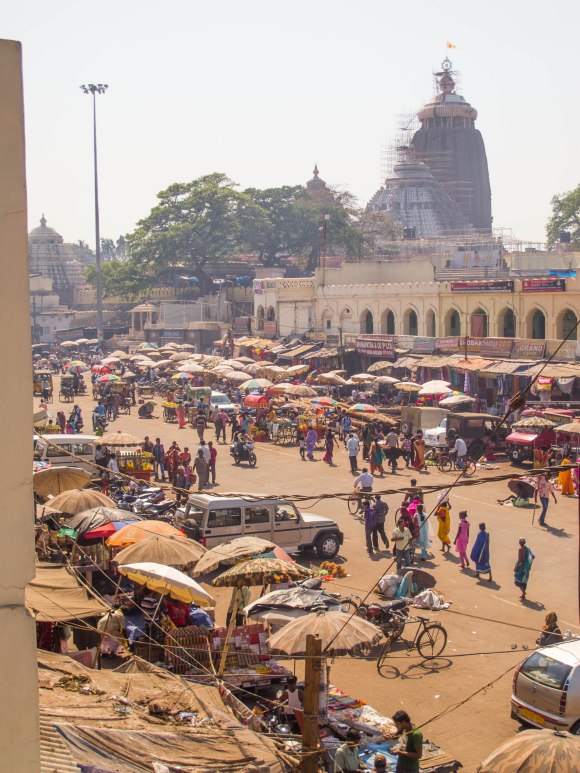
Jagannath Temple







[4] The market for t-shirts with slogans is huge in Calcutta. I’m not sure anyone actually gets the messages on the shirts they’re wearing though. A sampling of t-shirts I’ve seen include, “Drink, I’ll look better,” “Punctuality is the virtue of the bored,” “Don’t mess with Texas,” and, my favorite (seen twice, once in the slum and once by my friend Hallie on a chai wallah): “My Daddy is an ATM Machine.”
[6] Mirror Neurons are the newest discovery in neuroscience to provide some mechanism for how empathy could be built into the brain. They were discovered accidentally when a monkey had a set of neurons fire off when they did something and when they saw a human research subject do the same thing.
Pretend somebody pokes my left thumb with a needle. We know that the insular cortex fires cells and we experience a painful sensation. The agony of pain is probably experienced in a region called the anterior cingulate, where there are cells that respond to pain. The next stage in pain processing, we experience the agony, the painfulness, the affective quality of pain.
It turns out these anterior cingulate neurons that respond to my thumb being poked will also fire when I watch you being poked—but only a subset of them. There are non-mirror neuron pain neurons and there are mirror neuron pain neurons.
V.S. Ramachandran, neuroscientist
I’m not sold though. Only a few neurons of the entire set are being activated. How much of this experience can we really share with another person? How is empathy being actually measured? How much of this mechanism is self-serving, and how much of it is just simple recognition rather than the high-flown thought process we call empathy? What’s imitation and what’s the deeper understanding we call empathy? It’s got potential, but mirror neurons haven’t been fully fleshed out yet.
[7] Adam Grant is a professor at Wharton who studies organizational psychology (NYTimes). His research divides up people into three groups: Givers, Matchers, and Takers.
Givers give without expectation of immediate gain; they never seem too busy to help, share credit actively and mentor generously. Matchers go through life with a master chit list in mind, giving when they can see how they will get something of equal value back and to people who they think can help them. And takers seek to come out ahead in every exchange; they manage up and are defensive about their turf.
His research also showed that Givers are either usually highly successful or completely taken advantage of. The difference between successful givers and unsuccessful ones is that successful ones are picky: they only give to other givers and matchers, and avoid soul-sucking takers.
Traditionally, you’d think that serving others and one’s own productivity would be diametrically opposed. Grant’s conclusions are the opposite:
The greatest untapped source of motivation, he argues, is a sense of service to others; focusing on the contribution of our work to other peoples’ lives has the potential to make us more productive than thinking about helping ourselves.



